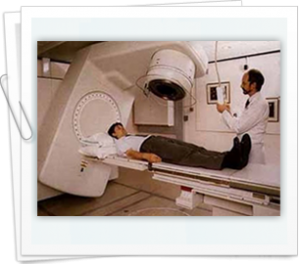Online CPR Certification Blog
Treating bone cancer with radiation therapy
Date: September 3rd, 2014
 Ideally, speaking, radiation therapy is not a primary treatment for bone cancer. The most preferred form of treatment is surgery even though some bone cancers like Ewing’s sarcoma or Ewing tumor are treated with radiation which is equally as effective as surgery. Cancer cells in other bone cancers tend to be very resistant to radiation and as such, high doses are needed for any effect to be yield. Unfortunately, though, high radiation doses can easily cause damage to other body parts that are healthy such as the nerves around the tumor.
Ideally, speaking, radiation therapy is not a primary treatment for bone cancer. The most preferred form of treatment is surgery even though some bone cancers like Ewing’s sarcoma or Ewing tumor are treated with radiation which is equally as effective as surgery. Cancer cells in other bone cancers tend to be very resistant to radiation and as such, high doses are needed for any effect to be yield. Unfortunately, though, high radiation doses can easily cause damage to other body parts that are healthy such as the nerves around the tumor.
Radiation treatment for bone cancer
In some circumstances, radiation therapy could be the most ideal treatment for bone cancer, especially in times when:
- Surgery has failed to remove bone cancer tumor completely or there was detection of cancer cells along tissue edges that were removed surgically.
- The location of the tumor makes surgery impossible.
- There is need to shrink the tumor so that it can be removed easily.
- The cancer in question is chondrosarcoma that attacks the cartilage. Since cartilage has no blood flow, chemo doesn’t work since blood is needed for the drugs to reach the site of the cancer.
- For relieving the pain resulting from metastatic bone tumors, i.e. tumors originating in one area after which they spread to other areas. In such a case, the symptoms can be relieved by radiation therapy instead of trying to cure the cancer.
Forms of radiation therapy available
Bone cancer can be treated with two kinds of radiation therapy:
External beam radiation therapy: this is ideally the most common form and it is very beneficial in treatment of bone cancer. High energy beams of radiation are used to attack and kill the cancerous cells. Radiation is focused on the tumor directly to ensure that nearby nerves and organs are not damaged. New advancements have made radiation even more effective, which include intensity modulated radiation therapy, proton beam radiation and intraoperative radiation therapy.
Brachytherapy
This type of radiation therapy aims at delivering the radiation into the tumor site directly by use of radioactive implants which the doctors insert in the body for a longer time period. Catheters may, for example, be inserted for delivering radioactive ‘seeds’. These seeds stay there for a couple of days where they deliver radiation therapy in high dosage to the tumor.
Radiation therapy: side effects
Generally, radiation usually causes pain, fatigue and the area that receives the radiation reddens just like in sunburn. Hair loss is also likely on the area that receives the radiation. These side effects can be minimized by:
- Having plenty of rest
- Taking a highly nutritious diet
- Ask your doctor about lotions and creams that can be applied on radiated part for preventing redness.
- Avoid wearing tight cloths over radiated area
- Protecting radiated skin from sun.
